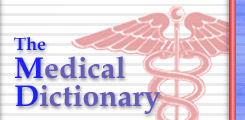Digitoxin
Digoxin is a cardiac glycoside extracted from the foxglove plant, digitalis. It is widely used in the treatment of various heart conditions, namely atrial fibrillation, atrial flutter and congestive heart failure that cannot be controlled by other medication. more...
Actions
The main effects of digoxin are on the heart, its extracardiac effects are responsible for most of the side effects, i.e. nausea, vomiting, diarrhea and confusion.
Its main cardiac effects are:
- A decrease of conduction of electrical impulses through the AV node, making it a commonly used drug in controlling the heart rate during atrial fibrillation or atrial flutter.
- An increase of force of contraction via inhibition of the Na+/K+ ATPase pump (see below).
Mechanism of action
Digoxin binds to a site on the extracellular aspect of the α-subunit of the Na+/K+ ATPase pump in the membranes of heart cells (myocytes). This causes an increase in the level of sodium ions in the myocytes, which then leads to a rise in the level of calcium ions. The proposed mechanism is the following: inhibition of the Na+/K+ pump leads to increased Na+ levels, which in turn slows down the extrusion of Ca2+ via the Na+/Ca2+ exchange pump. Increased amounts of Ca2+ are then stored in the sarcoplasmic reticulum and released by each action potential, which is unchanged by digoxin. This is a different mechanism from that of catecholamines.
Digoxin also increases vagal activity via its central action on the central nervous system, thus decreasing the conduction of electrical impulses through the AV node. This is important for its clinical use in different arrhythmias (see below).
Clinical use
Today, the most common indications for digoxin are probably atrial fibrillation and atrial flutter with rapid ventricular response. High ventricular rate leads to insufficient diastolic filling time. By slowing down the conduction in the AV node and increasing its refractory period, digoxin can reduce the ventricular rate. The arrhythmia itself is not affected, but the pumping function of the heart improves owing to improved filling.
The use of digoxin in congestive heart failure during sinus rhythm is controversial. In theory the increased force of contraction should lead to improved pumping function of the heart, but its effect on prognosis is disputable and digoxin is no longer the first choice for congestive heart failure. However, it can still be useful in patients who remain symptomatic despite proper diuretic and ACE inhibitor treatment.
Digoxin is usually given by mouth, but can also be given by IV injection in urgent situations (the IV injection should be slow, heart rhythm should be monitored). The half life is about 36 hours, digoxin is given once daily, usually in 125μg or 250μg dosing. In patients with decreased kidney function the half life is considerably longer, calling for a reduction in dosing or a switch to a different glycoside (digitoxin).
Read more at Wikipedia.org


